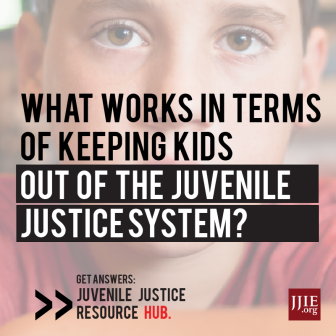 Our society has become one of exclusion. When people mess up we remove them from their communities in a type of exile. We have done this for more than 40 years with prisons. Everyone from low-level offenders to the most violent criminals have been locked up in amazing numbers for breaking societal rules.
Our society has become one of exclusion. When people mess up we remove them from their communities in a type of exile. We have done this for more than 40 years with prisons. Everyone from low-level offenders to the most violent criminals have been locked up in amazing numbers for breaking societal rules.
Those who are lucky enough to avoid prison end up under surveillance on probation, house arrest or some other punitive form of community correction. This, no doubt, has impacted the poor and people of color to a greater extent than middle- and upper-class whites. The research is in — this approach has not worked.
Unfortunately, this strategy has now permeated our schools despite the evidence that mass incarceration has been an economic and public safety failure. The exclusionary policies of incarceration and probation have been translated to schools in the form of suspension and expulsion.
Just as prisons and jails are useful in separating dangerous people from others, there is utility in suspending and expelling dangerous, repeat offenders in schools. In both cases, such exclusionary policies should be invoked as a last resort.
There is certainly disagreement as to when and how school punishment policies are used. Should there be a three-strike law in schools such as those that were used with mandatory minimum sentencing? Should we have zero tolerance policies to “set an example” to bad students? These are relevant and reasonable questions, especially by those who have been subjected to violence in school.
 However, after a 2011 Texas report found about 60 percent of students had received in-school or out-of-school suspension between seventh and 12th grad
However, after a 2011 Texas report found about 60 percent of students had received in-school or out-of-school suspension between seventh and 12th grad
e, with an average of about eight suspensions per student and 15 percent receiving 11 or more suspensions between 2000 and 2002, something seemed amiss. These statistics are even higher for black students. Exclusion appeared to become the new norm. Similar analyses were conducted around the country; the findings were the same.
There are several reasons why removing kids from their school setting for public safety is deleterious for students and larger society. First, a majority of kids who get suspended end up repeating a grade, setting up the student for long-term failure. Students who repeat a grade and spend a portion of their schooling suspended are more likely to drop out and not complete high school.
[Related: Will Restorative Justice Work in South Bronx Schools?]
Second, when kids who get into trouble are forced out of school, they are less likely to be supervised during the day, increasing their involvement in antisocial behavior. Combined, these two factors are among the most common correlates of being imprisoned. Thus, the term “school-to-prison pipeline” has been used to describe the funneling of kids from school to prison through punitive removal policies.
In a forthcoming book, my co-author Malcolm Holloman and I discuss how reforming school policies is integral in saving kids from a life behind bars. We know this because the bulk of research shows this. Malcolm knows first-hand that school exclusion was an early factor that led him to a life sentence at Smith State Prison in rural Georgia.
Third, evidence, including some of our own work, is emerging showing that students who are excluded from school experience a much greater likelihood of being victimized — even after accounting for their race, sex, class and own delinquent behavior.
While certain exclusionary policies increase school failure, offending and victimization, and reduce mental health, misbehavior in school should not be ignored. Luckily, evidence-based strategies exist to address school misbehavior and keep school safe while also keeping kids in the classroom.
One strategy is restorative justice. Restorative justice is the philosophical idea that crime disconnects people and frays the bond among each of us. Repairing that bond should become the norm of criminal justice. Restorative practices (the techniques or strategies behind the restorative justice philosophy) such as community conferences, victim-offender mediation and peacemaking circles allow students, teachers, parents, administrators and the school community to come together, discuss a problem and come to a collective resolution. Findings show that these practices enable the misbehaved student to take responsibility for their actions while also keeping them in the school setting. This reduces suspension and increases school safety.
Incorporating restorative justice into schools is one piece of the puzzle. We should also integrate it into our society any time a social rule is broken. A variety of restorative practices have been put to the test of rigorous empirical study and there is a clear pattern — restorative practices reduce reoffending, increase victim satisfaction and make communities safer. They additionally allow kids to stay in their communities, out of jails and prisons, and where they belong — in the classroom.
Chad Posick is an assistant professor at Georgia Southern University and a member of the Scholars Strategy Network.
More related articles:
OP-ED: Restorative Justice Isn’t Fluff, It’s an Investment in the Future
OP-ED: Restorative Justice Isn’t a Plug and Play Option
South LA High School Takes New Approach to Curbing Suspension Rates
OP-ED: I Believe in Restorative Justice for My Child’s Killer